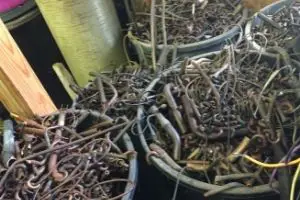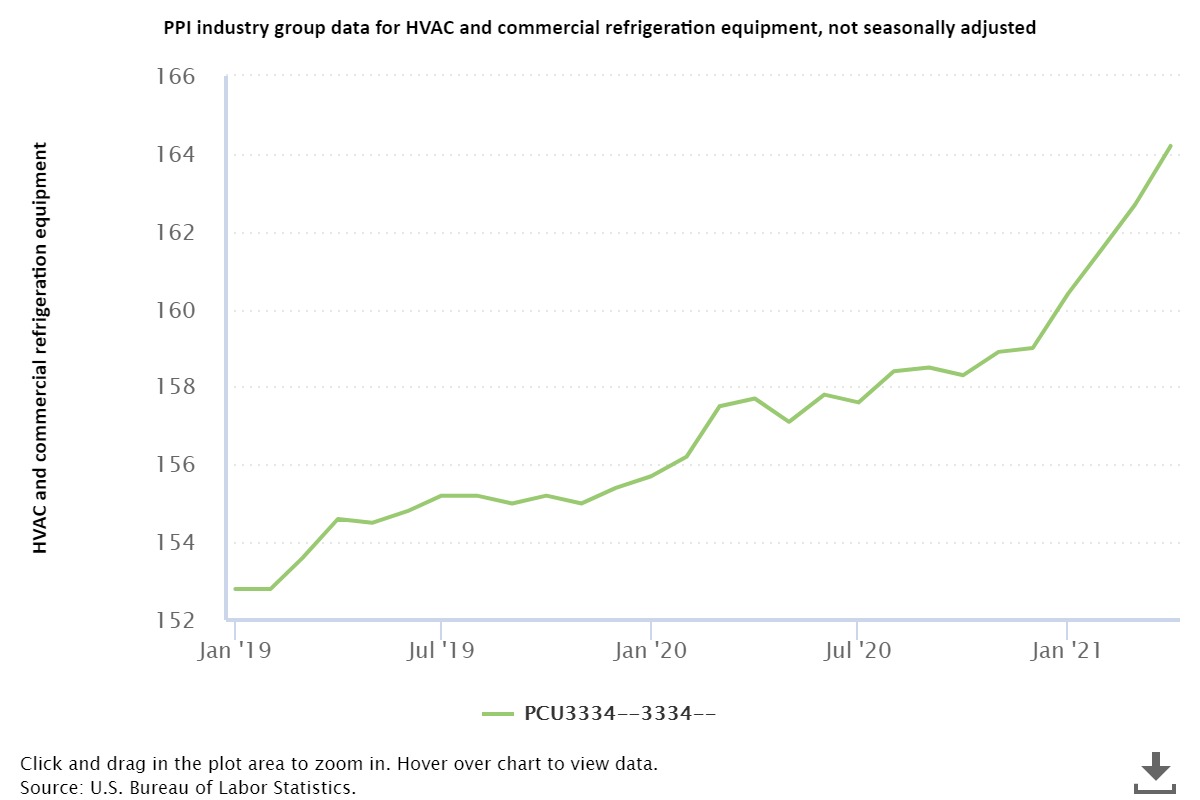Why Are Costs Rising for HVAC Service, Parts, and Repairs This Summer?
Costs are rising for HVAC service, parts, and repairs more than usual. You may be wondering why!
The demand for air conditioning parts, new units, and repairs tend to spike when the weather heats up. And our industry is accustomed to receiving price increases from manufacturers yearly. These issues we expect.
But this year, the COVID-19 pandemic has created a perfect storm that is making HVAC parts and equipment more expensive than usual at this time of year. The pandemic has reduced the supplies of raw materials and created labor shortages in factories that make the parts and equipment we need.
Add to this travel and transportation difficulties. It was no laughing matter when the container ship, Ever Given, stopped up ship traffic in the Suez Canal in March 2021. The Bureau of Transportation Statistics documented the negative effects throughout the supply chain for the United States ports including the Port of Houston, businesses, and consumers.
Here’s what to know about the many factors contributing to higher HVAC replacement and repair costs this summer.
The Cost of Diesel Fuel Is High
The cost of Diesel has been high – that is the fuel that is needed to bring our HVAC truck to your location to service or repair your air conditioner. We stock our trucks with as many consumable HVAC parts, tools and supplies as we can to make repairs easier.
Larger vehicles are needed to haul HVAC units and supplies when they need to be replaced. Diesel vehicles allow us to carry more weight with better gas mileage, and our trucks can stay in service longer, too.
How does this affect you?
Some HVAC companies may begin to reduce the size of their service areas. It can also mean that travel fees go up.
Raw Materials Are Affecting HVAC Pricing
Raw materials used to manufacture HVAC parts and equipment are in short supply and are becoming more expensive, too.
The U.S. Bureau of Labor Statistics keeps an eye on the prices of goods made in America by month, so you can watch the average prices as they change over time. NASDAQ also documents the pricing of commodities, and you can see the prices trending upward over the past year.

Copper piping reclaimed from HVAC units is ready to recycle.
Here are a few links to raw materials used in HVAC units:
- Steel mill products including sheet metal – The majority of an HVAC system is composed of steel. Sheet metal is used in ductwork, flex-duct, drain pans, media filter cabinets, return and supply plenums, strapping to support equipment, motor casings, compressors, coils, and the systems themselves.
- Lumber – HVAC units are delivered on wooden pallets. HVAC technicians use lumber to set and position ducts and HVAC equipment in the home or business.
- Copper – Copper piping is used to house refrigerant. Copper is used for control wiring and in the motors themselves.
- Aluminum – The fins in the evaporator coil and the condensing unit are made of aluminum. Fan blades are sometimes made from aluminum.
Another way we can tell that the prices are high is when we recycle parts from used HVAC equipment. The demand during the pandemic was low because factories were not working at capacity, which means that prices were low. That has changed in recent months.
What does this mean for you?
High demand and lower supply mean higher prices for parts and HVAC equipment for customers. We may not see the options we usually have. This is why we expect challenges sourcing parts and HVAC equipment this summer.
Refrigerant Prices Are Also Going Up
Refrigerant, the gas used to transfer heat out of your home or business, has always been pricey. Because R-22 or Freon® was phased out for more eco-friendly refrigerants, any repairs involving R-22 will be very expensive. This is no surprise.
The newer refrigerants, such as Puron® or R-410a and others which are often used to replace R-22, have been in higher demand which increases the price. Much of the supply of R-410a, which is a blend of R-32 and R-125 refrigerants, comes from China. Anti-dumping tariffs imposed by the U.S. government have caused the cost to go up over time.
How does this affect you?
Luckily, HVAC systems in good repair shouldn’t need additional refrigerant. Refrigerant is not consumable. This is why a fully charged system should not need “topping off.” If it does, it means you have a leak, which should be repaired.
The Semiconductor Chip Shortage Affects HVAC Service
Semiconductor chips are found inside higher efficiency HVAC systems – such as variable speed HVAC units, multi-speed central air units, heat pumps, and mini-splits. Consumers love them because they are efficient, quiet, and increase indoor comfort.
But Newsweek reports chip shortages are affecting the manufacture of new cars, smartphones, and computers. They also expect the chip shortage to extend to HVAC systems.
What Does This Mean for HVAC Service?
This means we could see a lower supply of high-end, optimally efficient HVAC units and parts. PC boards, the mini-computers that make them so efficient, may be harder to come by and more expensive if you need a repair or replacement.
HVAC Manufacturers Are Passing Along Higher Costs
We have seen price increases from many manufacturers of HVAC parts and equipment, including Carrier, Trane, Lennox, Daikin, Ruud, and others. Each has been forced to raise prices on their equipment for the third time this year as of June 2021.
ABR Wholesalers, Inc. has compiled a whole list of 2022-2023 price changes from HVAC manufacturers and suppliers.
Labor shortages from the pandemic have added to delays and shortages of equipment. This is why when you see the U.S. Bureau of Labor Statistics Producer Price Index (PPI) for HVAC equipment go up (as in the chart below), HVAC service companies and consumers can expect higher prices on air conditioners, heat pumps, and parts, too. The Producer Price Index “measures the average change over time in the selling prices received by domestic producers of goods and services.”

What do these price changes mean for you?
Staying informed gives customers more understanding around why supplies of air conditioners and heat pump parts may be limited and why the prices are higher than usual this time of year.
How to Plan for HVAC Service Despite Inflation
A variety of factors, not only hot weather, is contributing to the increased demand and lower supply of HVAC equipment. The rate of inflation is trending higher than it has for some time according to government statistics. This means that the value of a dollar is lower, meaning a consumer may have to pay more for the same item.
Understanding all of the market forces at play can help you to plan and to be patient if sourcing a part for an air conditioning repair takes longer than usual. Homeowners who know their air conditioner may not last the summer and fall might start thinking about replacement now, so they have more time to decide on what kind of system they want and what features are must-haves.
Most people keep a central air conditioner for 12-17 years, so it pays to get what you want because you may have it for a long time. Starting the HVAC replacement process before it is an emergency gives you extra time to make a decision and to explore financing if desired.
Facing an expensive repair or replacement when the temperatures are hitting the 80s, 90s or higher isn’t ideal. Starting that process earlier puts you in the driver’s seat, and it can reduce stress for all concerned.
We Can Help with HVAC Service
An air conditioner breakdown during hot weather can be stressful. This is why we advocate for regular maintenance and keeping abreast of market conditions. This gives savvy customers options to stay comfortable when the weather heats up.
Living in Fort Bend County near Richmond, Fulshear, or Katy, Texas? Call Terry’s A/C & Heating to get on our schedule for the day and let us get your air conditioner or heat pump back up and running!
Photo credits: 1) Terry’s A/C & Heating – Owner Rob Terry showing ductwork in attic 2) Terry’s A/C & Heating – reclaimed copper piping to recycle 3) Embedded graph from U.S. Bureau of Labor Statistics


 For
For  Call Us:
Call Us:  Text Us:
Text Us: 



